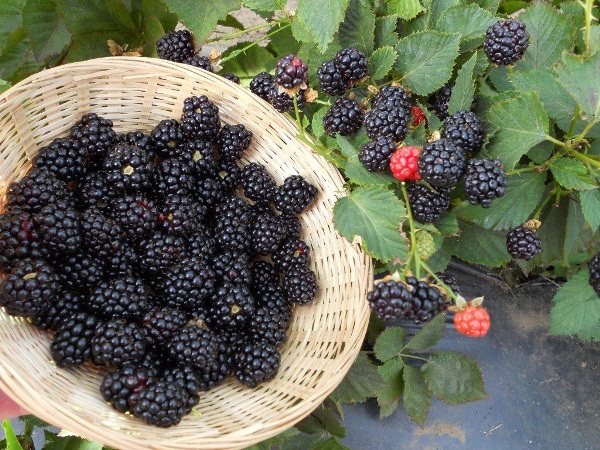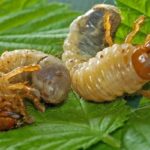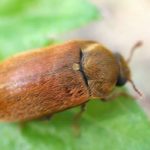Blackberries are becoming common garden berries of our latitudes. She is happy to be grown and bred for exceptionally sweet taste, pleasant aroma.. It is an easy breeding culture. Let's take a closer look at the description and characteristics of Ruben blackberry.
Table of contents
Breeding history
Blackberry in the 19th century was considered solely as an ornamental garden plant. In Europe, it began to grow as a fruit and berry culture a hundred years later. Horticulturists in America and Mexico were actively involved in the development of new varieties and improvements.. There the blackberry was already an industrial crop.
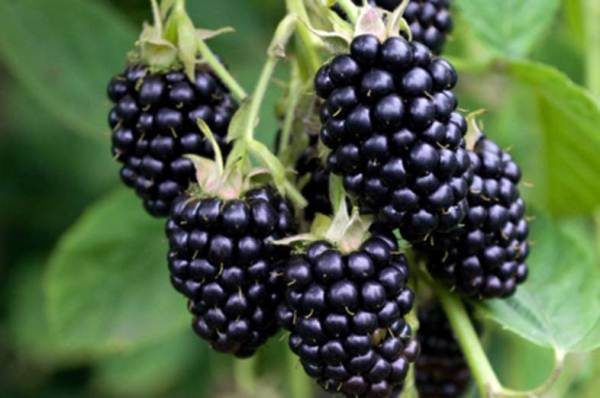
The main advantages of the berry were its taste, unique aroma, richness of vitamins and good preservation during transportation.. In addition, the berry was quite simple to grow, it was well tolerated by drought and cold. Over time, breeders brought out thorny types of shrubs, which simplified the process of industrial harvesting on plantations.
Description of blackberry Ruben
Ruben - the first type of blackberry, which gives fruit on the shoots of the first year. The variety was obtained at the University of Arkansas in collaboration with the nursery Hargreaves in 2011. Shrubs look like raspberries - upright. Berries ripen in August - October. The grade is unpretentious - well transfers the dry periods, fully develops both on the sun, and in shade. Well planted along the fence as a hedge.
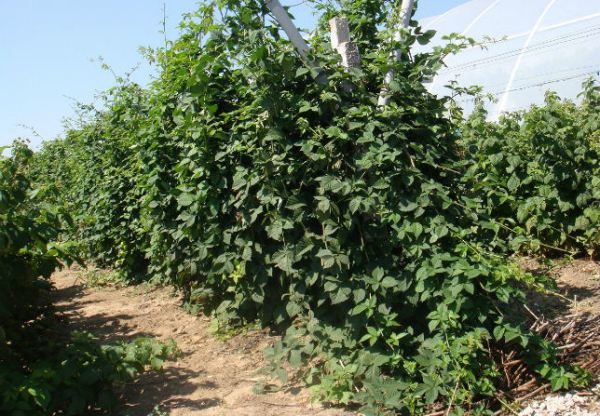
The repair blackberry was bred recently, but it has already gained popularity and love among gardeners. It is suitable for breeding in conditions of central Russia for personal consumption and on an industrial scale. The main part of the shoots after fruiting is removed, therefore, to protect against frost requires a root system with small processes. The bush during flowering is covered with large white flowers.
In nature, blackberry grows in different climatic zones. She tied and matures almost in the fall. Garden crops begin fruiting a little earlier - in mid-August. There are two types of shrubs - kumanika and rosyanika. The first species has upright stems and grows like a raspberry bush. The second species is a creeping plant.
Blackberries have light green shoots, which are painted in burgundy color by autumn. Flowers gathered in panicles on 10-15 pieces. Of them mature brushes of 7-8 berries each. The leaves are like raspberry or currant, edges - jagged. From the perennial roots shoots grow every year, which have time to develop and give abundant fruits. Blackberries can grow on any soil with good drainage.
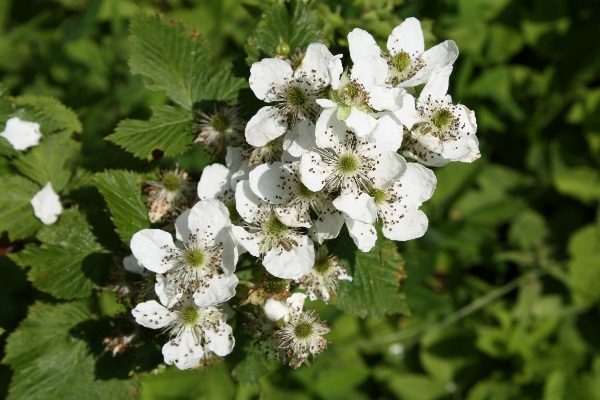
Features grade
- Blackberry Ruben gives berries on annual shoots;
- Compared to other varieties berries ripen much earlier - on two-year shoots - in June, on young shoots - in September;
- Blackberry bushes are very beautiful during flowering. They are covered with large white flowers and decorate the area with their views.
- After harvest spikes on shoots fall away!
Characteristic berries
Ruben - berries of a round shape, black color with characteristic shine. To taste - sweet and sour, with very close-fitting drupes, large and juicy. The average weight of the berries - 10 g, and the maximum - 14 g. Berry reaches in length - 4.5 cm. The collected fruits are stored for a long time in a cool place and do not deteriorate during transportation. The yield of one bush, on average, 3-4 kg. Ruben bears fruit twice a year - in June and in September.
Bush height reaches 180 cm. Shoots are strong, thick grow straight vertically, while not breaking. Propagated by root buds. The bush begins to bloom in mid-April. Large flowers - up to 6 cm in diameter. The berries are also large, on one branch of them grows from 6 to 8 pieces.
Features of growing
Flowering ends abundant fruit set in a cool lingering spring. Frosty winter does not harm the roots and shoots left. They are covered with straw, cardboard, spandbdom. Blackberries love moisture, but without damage endure dry periods. If there is no rain, then once a week it is necessary to water the bush with two buckets of water. It's enough.
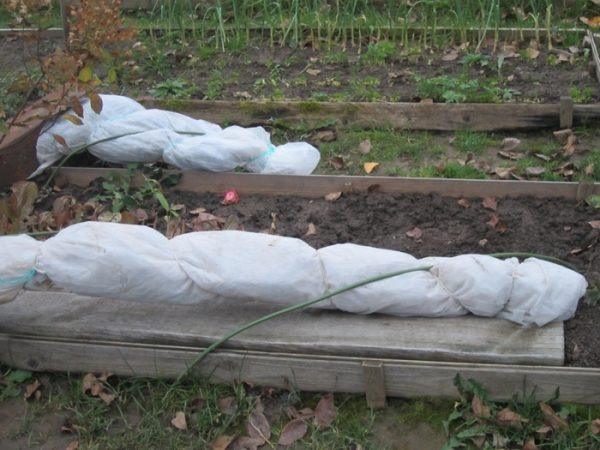
All shoots are cut off in the fall at the root. Ruben - the earliest variety of garden blackberries. She manages to give powerful shoots, foliage and two crops of berries. For a successful growing season should be planted bushes in partial shade in a place protected from the wind. The distance between seedlings - not less than 100cm.
Flowers develop well and are fertilized in wet weather. 7-8 days before flowering roots watered abundantly, evaporating moisture creates a comfortable microclimate for the plant. When industrial cultivation during this period include small-drop irrigation system and protect the bushes from direct sunlight. To ensure abundant harvests in the future, at first it is necessary to give the opportunity to develop the root system.
The number and size of berries depends on the proper and timely soil moistening. You can not flood the plant, but you can not allow overdrying the land. An important role is played by mulching of the near-stem circle.. Put a thick layer of straw or grass.
Caring for the culture, dressing
Blackberry bush is very similar to raspberry, and the plant should be looked after almost as raspberry. But there are features. Upon reaching a certain height (at the discretion of the gardener), the top of the escape must be nipped off.. If the bush ceases to grow intensively upwards, side shoots will start to form, which will also be fruit-bearing.
Blackberries are cross-pollinated. This happens better in a wet environment. Dry air slows down pollination and fruit set. Intensive watering is necessary during the period of fruit pouring..
Powerful growth and fruiting deplete the power of the bush. To restore them, the plant must be supplied with microelements and fertilizers. In the spring, after the opening, it is necessary to apply nitrogen fertilizers, urea. Good food will get roots from a mullein or a chicken manure.
Reproduction of blackberry repair
Reparative blackberries are propagated by root bud or grafting. The root is dug out, the stalk with part of the rhizome is separated from the mother bush. Then it is planted in the prepared soil. It is better to do this in the fall so that the bush will take root in winter. Blackberry roots intensively develop deep into and in width. For quick rooting of the cutting, it is necessary to loosen the ground around the planting in a diameter of 60-70 cm.
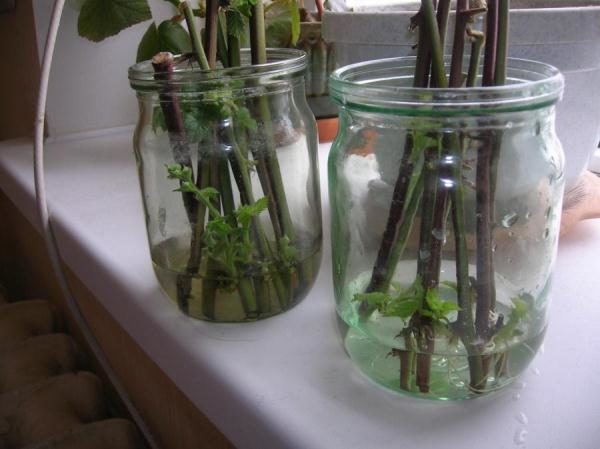
Depth of planting depends on the selected planting material. Green cuttings or root shoots are buried to a depth of 8–10 cm, and seedlings with a developed root system are planted in holes 60–70 cm in diameter.
Soil mixture is prepared as - Add humus and wood ash to the ground. Part of the obtained substrate is fertilized with 75 g of mineral fertilizers and poured into the bottom of the hole. Then pour out the rest of the mixture in a cone-shaped manner and place the fathoms on it. Roots are evenly laid out on the sides of the hill and sprinkled with earth.
Culture can be propagated by seed.. Pre-they are kept in the refrigerator. Sprouts sprout better in wet sand or peat. When the second leaf appears, the plant is planted in the fertilized soil in a pot or in a permanent place.In winter, you can grow planting material at home. Such a seedling will grow into a real bush for the 2-3rd year and will begin to bear fruit. The quality and properties of the berries does not deteriorate.
Diseases and pests
- Chafer. Scary larvae of beetle, which harm the roots of the plant. The larvae mature for 2 years at a depth of 40 cm, feeding on humus. The plant begins to wither. For struggle with nmim gardeners use drugs Antihrushch, Candifor, iodine solution. Mustard can be planted between blackberry bushes. Its roots secrete a substance that drives the larvae away.
- Raspberry beetle - A pest that eats leaves, stems and flowers of many berry crops. But more often it parasitizes raspberries and blackberries. The beetle lays the larvae in the grooves of the leaves or flowers. The larvae fall to the ground. To combat this pest, the ground around the bush must be dug up, sprinkled with ashes. The plant itself, 7 days before flowering, must be treated with solutions of actellic, spark, kemiphos.
- Maybot larvae
- Raspberry beetle
Blackberries are becoming increasingly popular with gardeners, pleases with tasty fragrant berries at the end of summerwhen the main cultures otlodonosili. It is well kept and easy to maintain.
